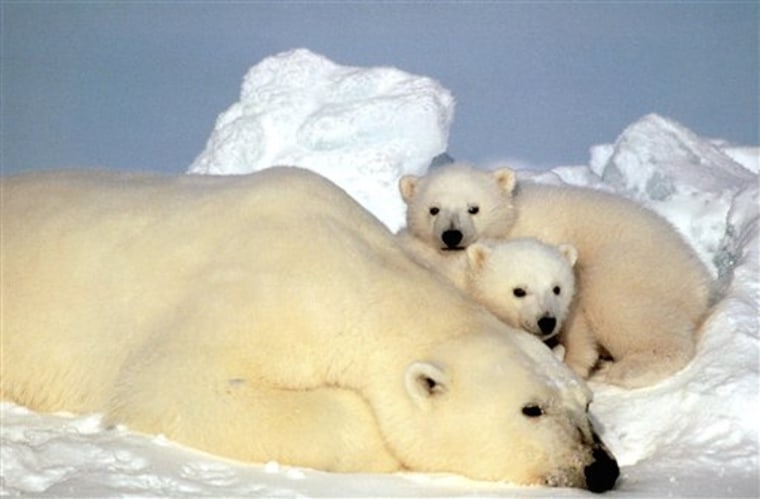The giant white bears of the North are a remarkably recent offshoot of the brown bear family tree according to the oldest DNA studied to date from a rare fossil from Norway.
The mitochondrial DNA (mDNA) from the 150,000-year-old bear fossil place it on the bear family tree very near the time when a branch of the brown bears diverged and, after a lot of rapid evolution, became the very specialized polar predator we know today.
The discovery settles some controversies about polar bear evolution, as well as raises questions about the great mammal's ability to adapt to a warming climate.
"People didn't really know where the polar bear came from," explained Schuster. "Some people said the speciation happened very, very recently, perhaps within 10,000 years."
This idea of even more recent speciation is attractive because it would avoid having to figure out how polar bears survived a very warm interglacial period 44,000 years ago, Schuster said. That the polar bear evolved earlier and endured a warm period raises all sorts of questions about whether or not polar bears can survive the 21st century's rising temperatures.
"That's the million-dollar question," said Charlotte Lindqvist of the University of Buffalo and the lead author of the new study.
The discovery confirms a previous study that had looked at the genetic "molecular clocks" of living bear species to estimate when polar bear lineage likely branched off from brown bears. That study came up with a range of 145,000 and 180,000 years ago.
"It completely corroborates the conclusion we came to," said Lisette Waits of the University of Idaho's Laboratory for Conservation and Ecological Genetics.
The successful analysis of the mDNA from the bear fossil makes it the oldest genetic material studied in this way, said Stephan Schuster of Pennsylvania State University, a co-author of the new study which appears in the current issue of the Proceedings of the National Academy of Sciences.
Lindqvist cautions that the speed of the polar bear evolution and their survival of the last interglacial warm period does not guarantee that the bears will evolve their way out of the current global warming.
"When we talk about polar bears evolving rapidly it wasn't overnight," Lindqvist told Discovery news. It took more like 10,000 to 30,000 years to evolve today's highly specialized polar bear from the far more generalized brown bear ancestor.
"If climate changes are now happening at an accelerating rate," said Lindqvist, "the question is can polar bears keep up."
It seems probably, said Schuster, that polar bears survived the last warm period by hiding out in a few isolated icy places. What that suggests, he said, is that maybe we should be looking at where those refuges might be today and do what we can to make sure they will be there for the bears again.
Even that could backfire, said Waits, because the gene pool of polar bears could get so small that inbreeding, along with pressures from human activities, would wipe them out.
"There are still many reasons to be quite concerned about polar bears," cautioned Waits.
